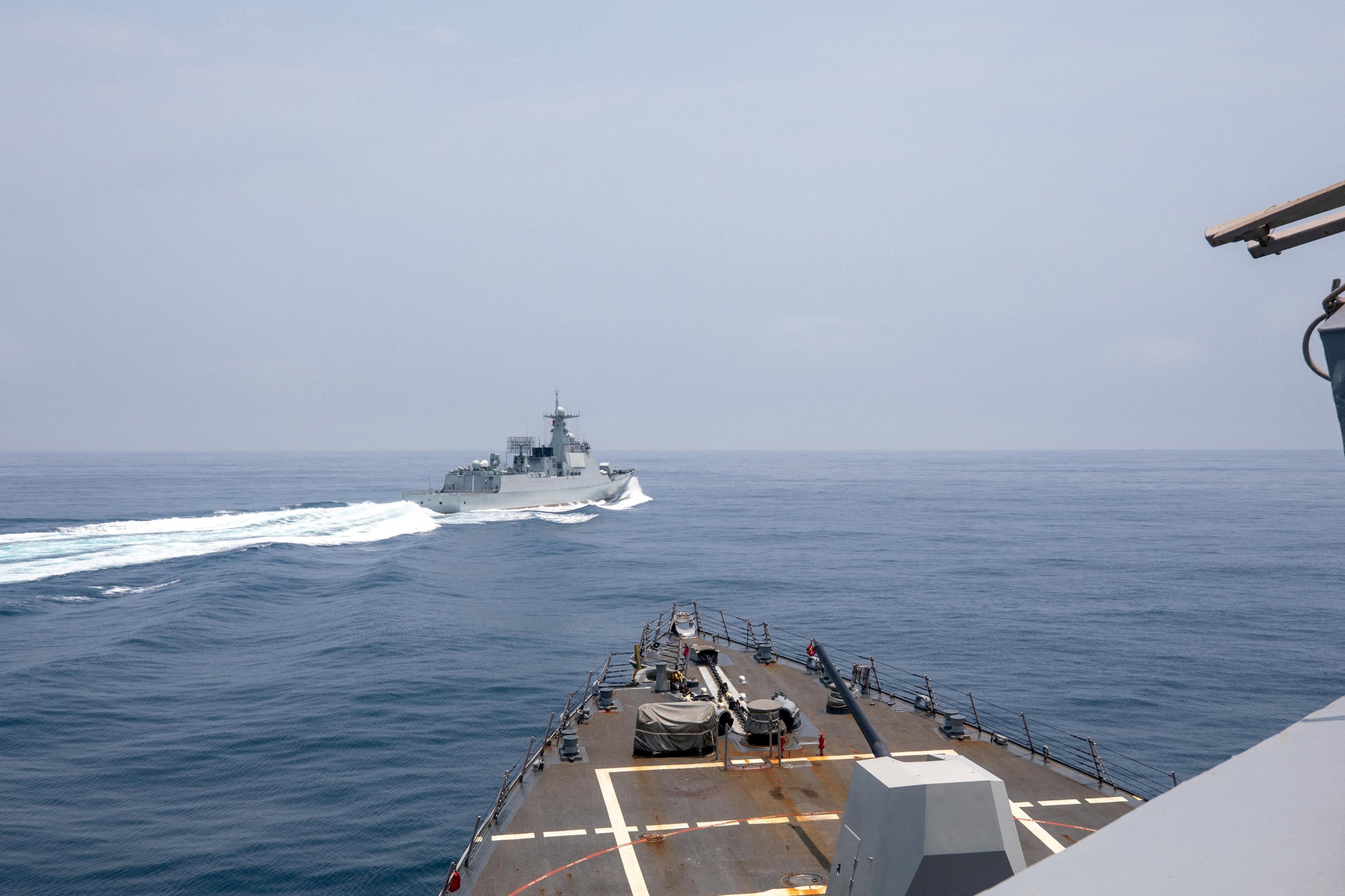© Turkuvaz Haberleşme ve Yayıncılık 2026
Taiwan's newly elected leader said Sunday he was still willing to work with China, despite Beijing's military drills around the self-ruled island this week.
Three days after Lai Ching-te was sworn in, Chinese warships and fighter jets encircled Taiwan in drills that China said were a test of its ability to seize the island.
During the two-day drills, China vowed that "independence forces" would be left "with their heads broken and blood flowing."
Lai told reporters on Sunday that he wanted Taiwan and China to "jointly shoulder the important responsibility of regional stability".
"I also look forward to enhancing mutual understanding and reconciliation through exchanges and cooperation with China ... and moving toward a position of peace and common prosperity," he said at an event in Taipei.
Communications between China and Taiwan were severed in 2016 after former leader Tsai Ing-wen took office, pledging to defend Taiwan's sovereignty.
Lai, who comes from the same Democratic Progressive Party (DPP), has vowed to maintain Tsai's policies of building up Taiwan's defense capabilities, while remaining open to dialogue with China and strengthening relations with the island's partners – particularly the United States.
But China said Lai's inaugural speech Monday amounted to calls for independence, "pushing our compatriots in Taiwan into a perilous situation of war and danger."
"Every time 'Taiwan independence' provokes us, we will push our countermeasures one step further, until the complete reunification of the motherland is achieved," Defence Ministry spokesperson Wu Qian said Friday.
Wen-Ti Sung, a nonresident fellow at the Atlantic Council's Global China Hub, told AFP that Lai would "hold firm to project resolve" after this first interaction between his administration and Beijing.
"However, he will no doubt be looking to leverage other international partners and friends to help facilitate more back-channel communications with Beijing," Sung said.

Since 2016, Chia has upped military and political pressures on Taiwan, and its naval vessels, drones and warplanes maintain a near-daily presence around the island.
The dispute has long made the Taiwan Strait one of the world's most dangerous flashpoints.
During this week's drills, fighter jets loaded with live ammunition scrambled toward targets and bombers formed formations to combine with warships to simulate "strikes against important targets," China's state broadcaster CCTV said.
Tong Zhen, from China's Academy of Military Sciences, told state news agency Xinhua that the drills "mainly targeted the ringleaders and political center of 'Taiwan independence', and involved simulated precision strikes on key political and military targets."
Meng Xiangqing, a professor from Beijing-based National Defense University, told Xinhua that the People's Liberation Army (PLA) vessels "were getting closer to the island than ever before" and had included the island's east – considered by the PLA the most likely direction from which external intervention could come.
"The drills have shown that we can control that eastern area," Meng said.
The United States, which does not diplomatically recognize Taiwan but is its biggest ally and arms supplier, on Saturday urged China to "act with restraint."
Experts say Beijing is seeking to intimidate and exhaust Taiwan's military.
On Sunday, two days after the drills ended, Taiwan's Defense Ministry reported that seven Chinese aircraft, 14 naval vessels and four coast guard ships were "operating around" the island in a 24-hour period ending at 6 a.m. (10 p.m. GMT Saturday).
The ministry also said in a separate statement that it had found a cardboard box containing political slogans that it said was left by Beijing on a dock in Erdan, an islet part of Taiwan-controlled Kinmen next to China's Xiamen.
Taipei shrugged off the incident, saying it suspected it was intended to create online chatter.
